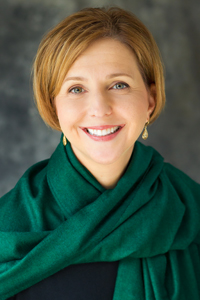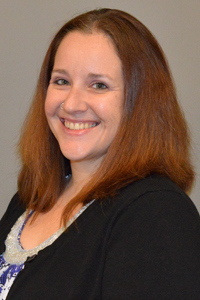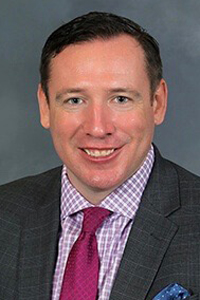YOUNGSTOWN, Ohio – News flash: College students still pursue degrees in journalism. Update: They are preparing for careers that will take them beyond the traditional newsroom setting and are learning skills beyond how to gather the news and news production techniques.
Colleges and universities in the region report lower enrollments and graduations in journalism and related fields. This reflects, in part, the perception of reduced employment opportunities in the field.
This past fall, enrollment in the journalism track at Kent State University was 84 students, fewer than half of the 173 enrolled in 2014, reports Emily Metzgar, director of KSU’s School of Media and Journalism.

Those declines are consistent with what is taking place across the country in higher education. It reflects the “demographic cliff” caused by the accelerating decline in the college age population, Metzgar says. There has been a “definite decline” because of the coronavirus pandemic but how quickly those declines will be recovered remains a question.
Youngstown State University reports nine journalism graduates for the 2019-2020 academic year, down from 11 each of the previous two years. During the 2016-2017 year, which Shelly Blundell, assistant professor of journalism and communication, describes as a “banner year” for the YSU program, 20 journalism majors were graduated.
Whereas a decade or two ago students might prepare for a specific role or field of reporting, today they often are expected to be “a Jack or Jill of all trades,” Blundell says.
“The expectations of journalists are so much higher than I would say even five years ago,” she says. They now are called upon to write and edit copy, produce multimedia packages and post on social media.

When he taught at New York’s Ithaca College before coming to Thiel College in Greenville, Pa., Kyle Woody noticed that many students who enrolled in journalism would shift to majors such as television/radio or strategic communication. Woody is executive director and holds the endowed chair at Thiel’s James Pedas Communication Center.
First-year students in the media studies program sometimes have “a bit of a misconception,” possibly based on media portrayals about journalism in which the protagonist portrays a glamorous vision of the field, Woody says.
Prospective students considering the media and journalism major at Thiel “tend to gravitate more toward production,” such as audio, television studio or field production, he says.

Woody points to a couple of factors. One is that labor market projections show jobs in journalism are on the decline. Another factor is the nature of K-12 education, which often emphasizes memorization and regurgitation of material so students can pass state-mandated tests.
“Depending on their state, there no longer is an emphasis on creative writing and problem solving,” he says.
As a result, those students lack some of the “hard skills” required for journalism, such as writing, interviewing and storytelling. Once they begin taking journalism classes, they recognize that they lack the skill set needed and decide against it as a career.
Christopher Keppler, associate professor of practice at the University of Akron School of Communication, says students in the media studies program don’t appear to have “a great deal of interest” in traditional journalism. Instead, they have a vision of news shaped by 24-hour news channels and social media.

“My view of their version is for them to talk or write about what they think. That’s not news. That’s the op-ed page,” he says.
Keppler grew up seeing the newspaper. Although he didn’t have an “intense interest in the news,” he says, he was aware of what news was. And it was easier to understand the basics.
“Today, things are kind of muddled up, with things that are not true or not reported in an objective way,” he says.
Faculty at Kent are “very focused on thinking about what the curriculum needs to look like for people who are interested in pursuing a degree in journalism,” Metzgar says.
Metzgar points to a couple of factors driving down interest in journalism as a career, including perceptions of poor employment prospects and a political environment often hostile toward journalists, with criticisms coming from both ends of the political spectrum.
She says newsrooms across the country have seen significant cuts and the number of newsrooms overall has declined. While prospects for traditional media outlets are dim, the environment offers opportunities for journalism programs to look inward. At its basic level, journalism is focused on how to find, collect and communicate information. Digital skills such as using a camera and editing video have become a part of that.
Students need to be armed not only with the skills associated with journalism but also the business side, Metzgar continues. Students are graduating into the gig economy and need to be prepared to spend time working as a freelancer and to hustle for jobs, manage a business and create a startup of their own.
“There are a lot of opportunities for people who have journalism and entrepreneurship skills and tech skills necessary to succeed in the current environment,” she says.
YSU’s journalism program is seeing “significant interest” as a minor from students in other fields who, during the pandemic, realized they need to communicate better to the public what they do, Blundell says. During the fall semester, at least five of her students were non-journalism majors – in fields including geology, biology and anthropology – who were “strongly considering” picking it up as a minor.
One of YSU’s degree tracks is broadcast and digital media, which includes instruction on telecommunications. Students in that track learn about the non-print aspect of journalism, such as how to develop podcasts, how to source audio and video content for different multimedia packages, and get experience with various broadcast endeavors such as Jambar TV, Blundell says.
Upper-division students learn skills such as how to create their own news websites. This includes learning how to ethically and legally curate content from other news sources.
They also are taught how to use Google Analytics to track responses to content and measure how much time people stay on a particular story, how to create and improve social media profiles and how to interact with social media to drive audience.
“It’s so much more than developing content,” Blundell says. “They’re learning how to go into those higher order demands that the news industry has developed in the 21st century.”
YSU’s journalism program doesn’t have an internship requirement but there is an option for students to intern for academic credit, Blundell says. The program maintains good relationships with local news organizations; several media figures serve as adjunct faculty. The program now is part of the Williamson College of Business Administration, which has a unit that specializes in placing students in internships and working with them to develop career opportunities.
Akron’s Keppler, who also serves as internship coordinator and manages WZIP-FM, says there’s a history of students getting jobs from their internships. The career services office does “incredible things,” he says, in terms of connecting students with internships and jobs, including hosting career fairs on campus. Former students in leadership positions at media organizations reach out to his department to see whether any recent graduates are available to fill positions.
Three of the four academic majors in Thiel’s program require internship experience, for a minimum of three credits and usually 150 to 180 hours, Woody says. Students can get those experiences through Thiel’s television and radio station and the campus newspaper.
“Faculty take a great deal of pride in the relationships they maintain with members of the journalism community and in connecting students to opportunities within those news organizations,” Kent’s Metzgar says.
